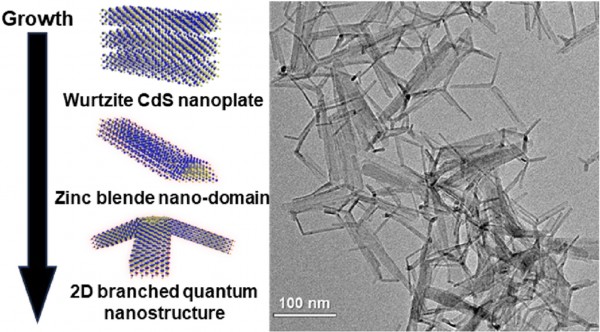Controlled synthesis of branched 2D polytypic CdS quantum nanostructures
- 저자
- Yoonkyum Kim, Hyeonjong Ma, Hyeongseung Kim, Hyungju Ahn, Gyeonguk Min, Dong Hyeon Lee, Yong-Young Noh, Jin Joo*, Jiwoong Yang*, Jae Sung Son*
- 저널명
- Materials Today Nano, 29, 100549 (2025)
- 년도
- 2025
- Link
- https://doi.org/10.1016/j.mtnano.2024.100549 404회 연결
[Abstract]
Colloidal two-dimensional (2D) semiconductor quantum nanostructures have attracted substantial interest owing to their atomically uniform thickness and spectrally sharp luminescence, exhibiting potential for optoelectronic and electronic device applications. Despite recent advancements in chemical synthesis enabling better control over lateral shapes and heterostructures, achieving morphological complexity in 2D semiconductor nanocrystals remains challenging. In this study, we report the controlled synthesis of branched 2D CdS quantum nanostructures, facilitating the realization of polytypism by growing zinc blende nano-domains within wurtzite-structured quantum nanoplates. The synthesized structures comprise multi-branched 2D quantum nanoplate arms with a precisely controlled thickness of ∼1.8 nm, joined at the zinc blende nano-domain junctions. The reaction conditions enable controlled variation in the length and complexity of these structures, while maintaining their sharp excitonic features of quantum-confined 2D semiconductor nanocrystals. In-situ small- and wide-angle X-ray scattering analysis, combined with spectroscopic and microscopic analyses, reveals that a discontinuous increase in thickness beyond a certain threshold is necessary to form zinc blende crystals within wurtzite nanoplates, upon which additional 2D quantum nanoplates subsequently grow. This study advances our understanding of 2D nanocrystal synthesis mechanisms and provides pathways for designing and fabricating branched 2D nanostructures with tailored properties.
